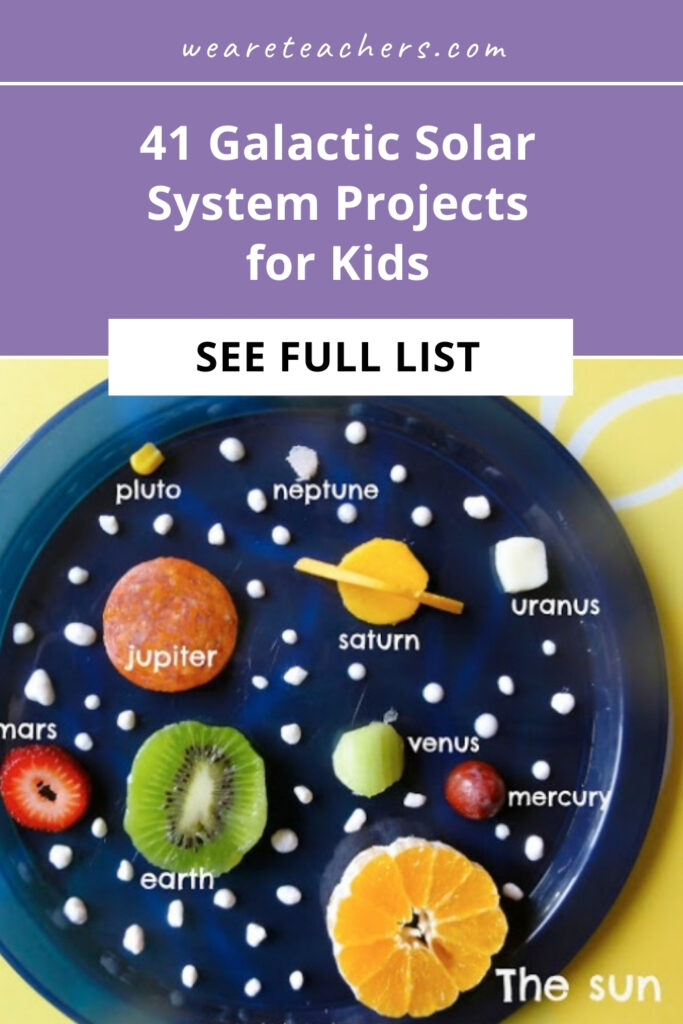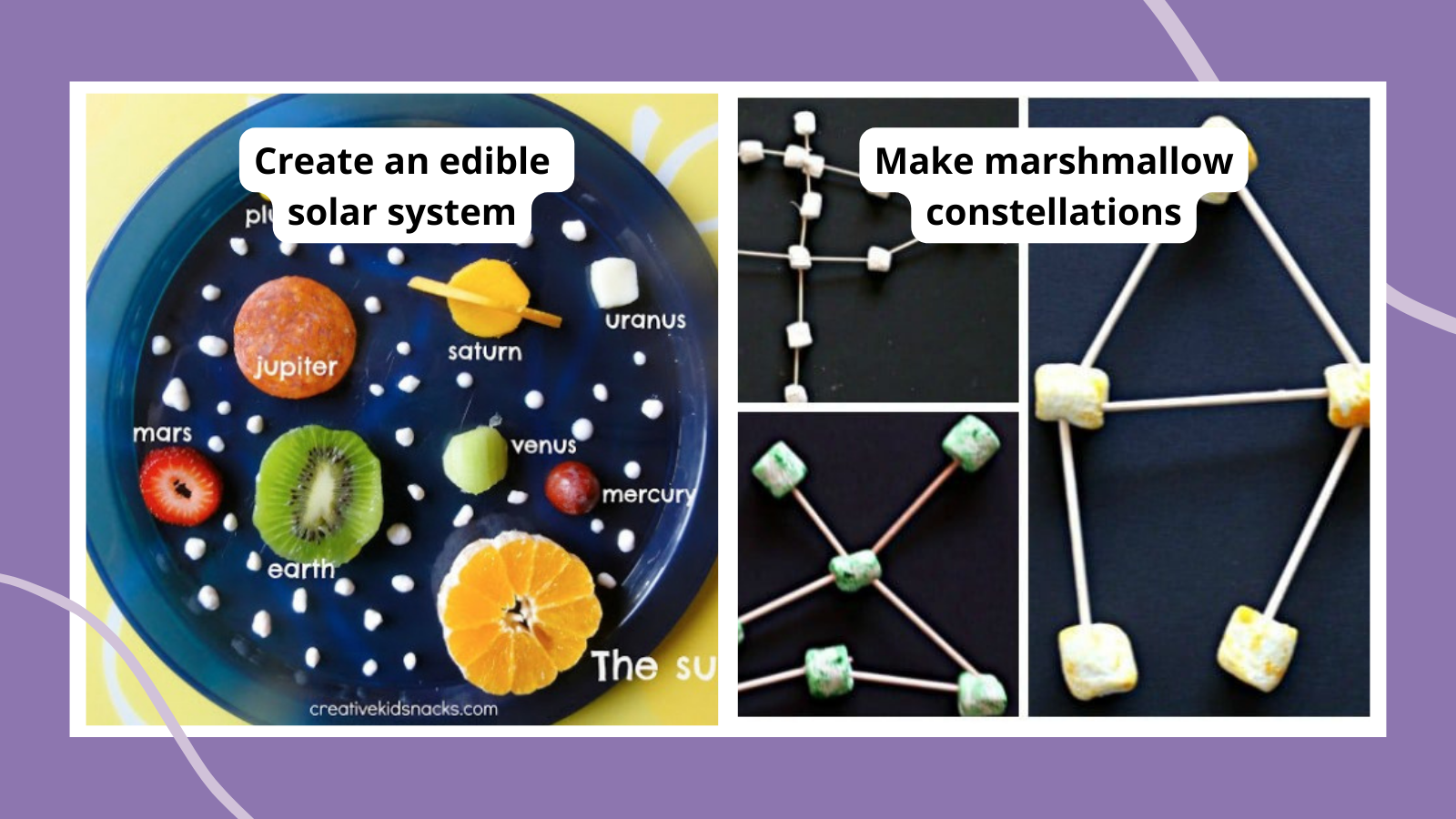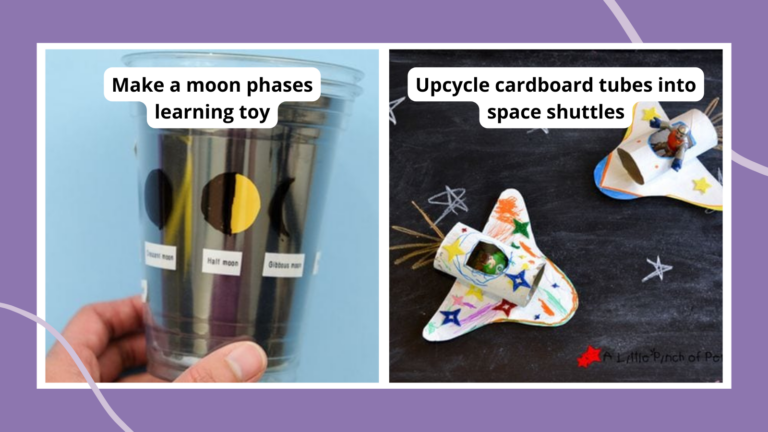You’d be hard-pressed to find a kid who isn’t drawn to space exploration. The solar system is filled with endless wonders and mysteries that help grow children’s interest in science. We have, however, come a long way since the days of hanging mobile solar system models (not that there’s anything wrong with that). From edible solar systems to large-scale chalk outlines, we found plenty of creative solar system projects to inspire budding astronomers.
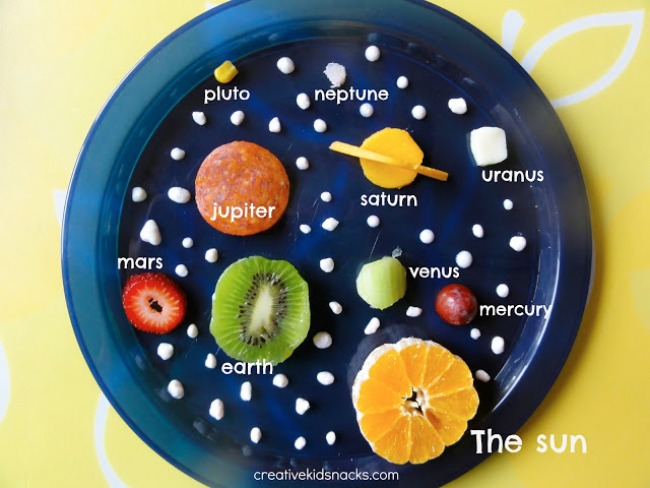
1. Create an edible solar system
We love solar system projects that are equally effective as a lesson on healthy eating and science! Grab a variety of fruits, veggies, and meats, then have students get to work creating their solar system snack.
Get tutorial: Edible Solar System
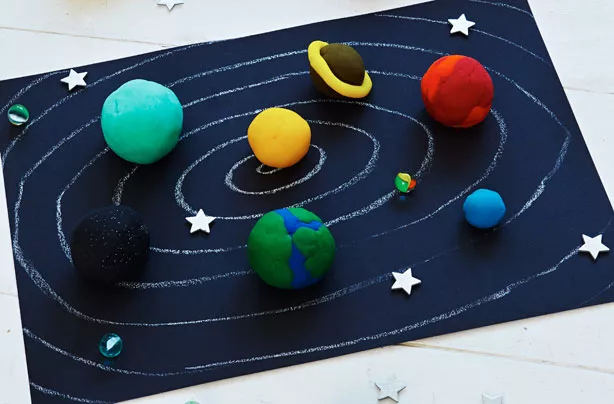
2. Make play dough planets
First, make some DIY play dough or, if you’re in a pinch, buy some in a variety of colors. Then, show your students different photos and renderings of the planets so they can mold them. Finally, draw rings with white chalk on a sheet of black construction paper to represent the solar system.
Get tutorial: Play Dough Planets
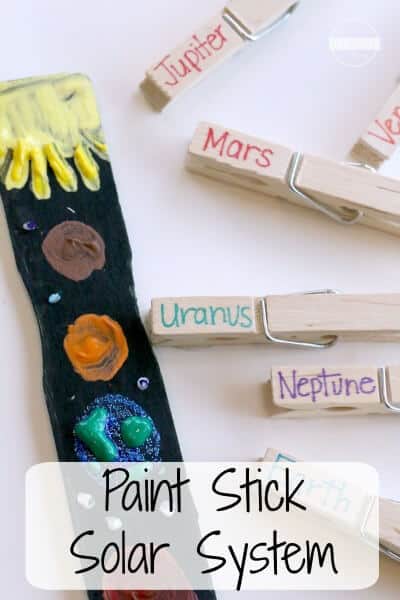
3. Create a solar system on a paint stick
Solar system projects that are simple and require minimal preparation and supplies are some of our favorites! This one fits the bill since all you will need are paint sticks, painting supplies, clothespins, and some markers.
Get tutorial: Paint Stick Solar System
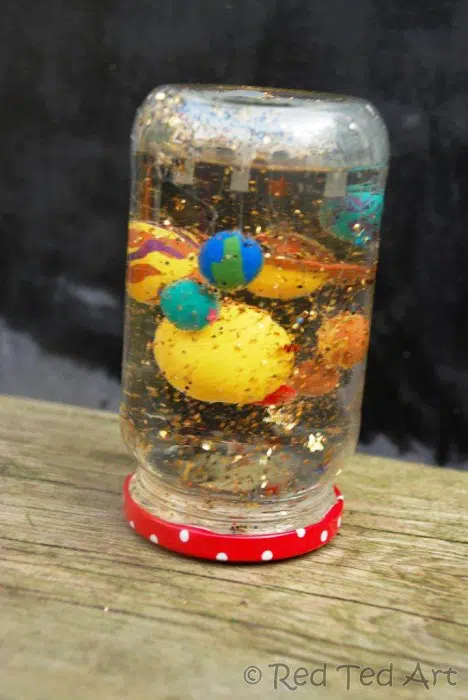
4. Build a space snow globe
Surely every adult remembers making a homemade snow globe at some point in their childhood. Re-create these memories with your children or students while also learning about the planets and solar system.
Get tutorial: Space Snow Globes

5. Learn about constellations with free printable cards
First, download the free PDF of these constellation flash cards. Then, print them and cut them out. Then have your students test their knowledge of the various constellations found in the sky. If they have access to a telescope at home, they can use them to identify what they are looking at.
Get printable: Constellation Flashcards
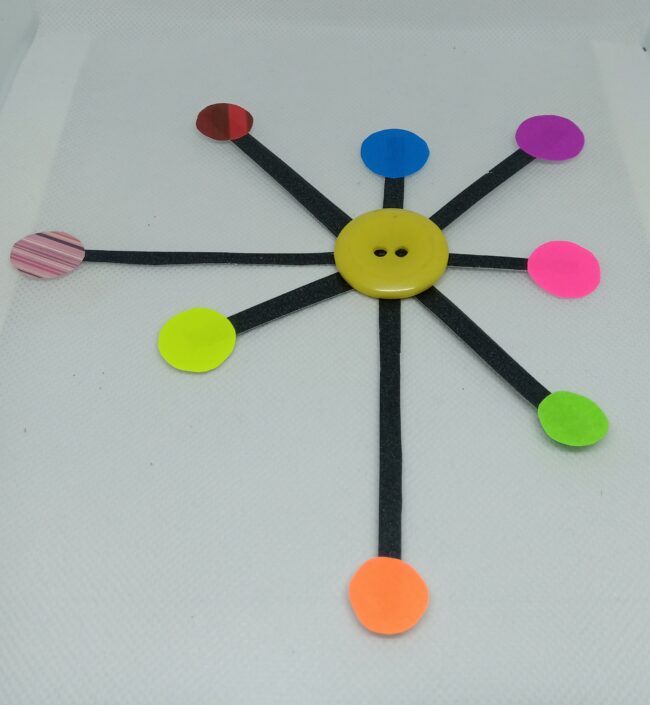
6. Simplify the solar system
This solar system project demonstrates how close each planet is to the sun. A yellow button makes for the perfect sun while paper dots work great as the planets.
Get tutorial: Solar System Button Model
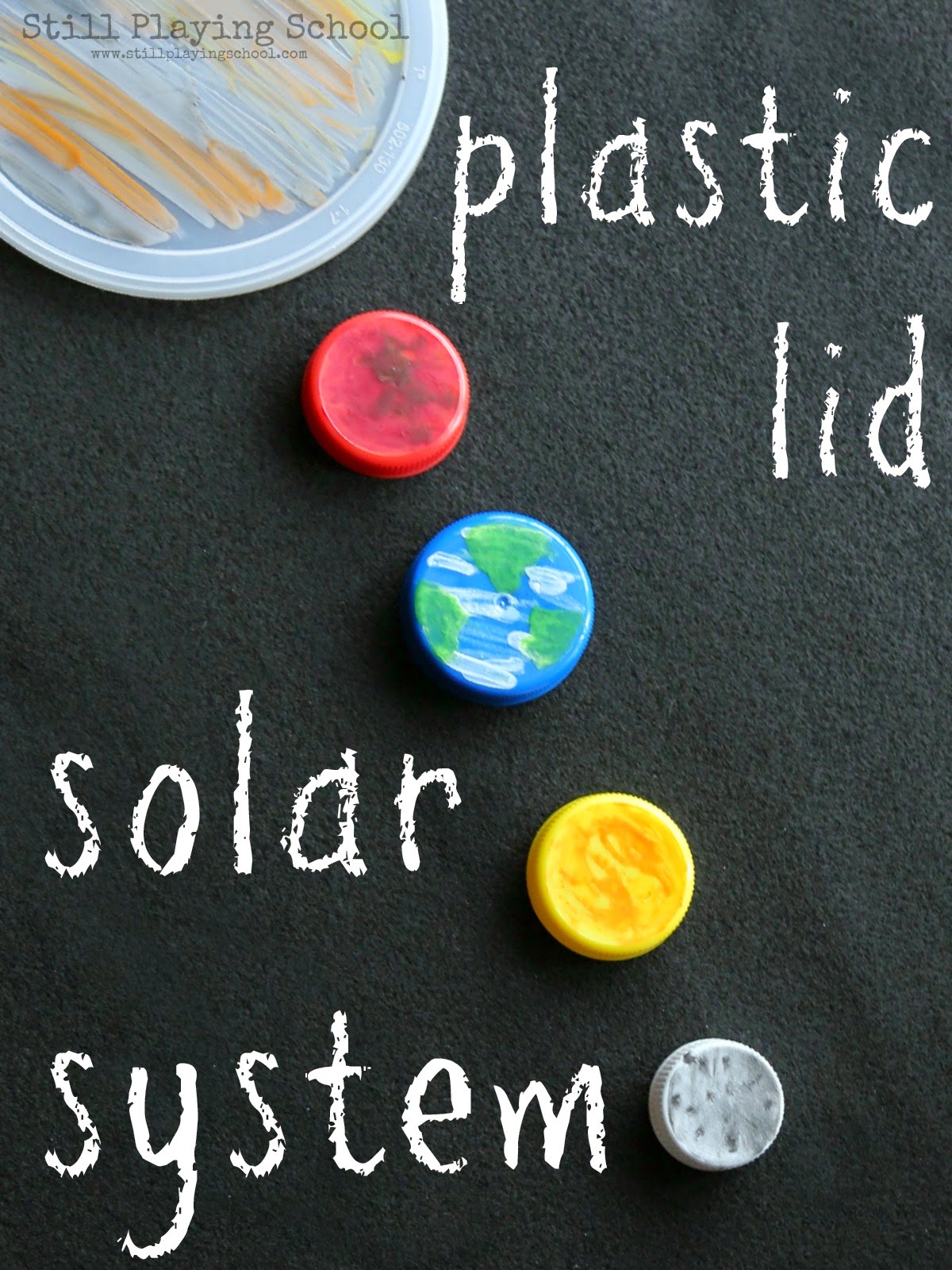
7. Use plastic lids as planets
This project puts the concept of upcycling to good use. Have your students save all their various bottle caps and lids before you plan to do this project. Paint them as necessary and lay them out on some black paper to represent the various planets in the solar system.
Get tutorial: Plastic Lid Planets
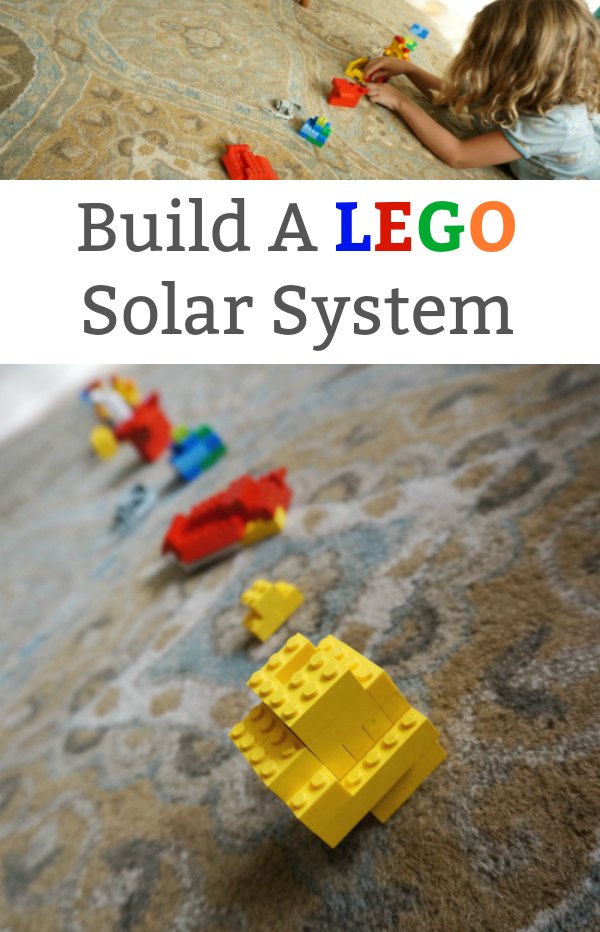
8. Build a solar system out of LEGO
Kids love LEGO and they love anything space-related, so this project is a win-win in our book. Ask friends and family to donate LEGO bricks that their kids have outgrown so you have plenty of blocks for your students to work with.
Get tutorial: LEGO Solar System
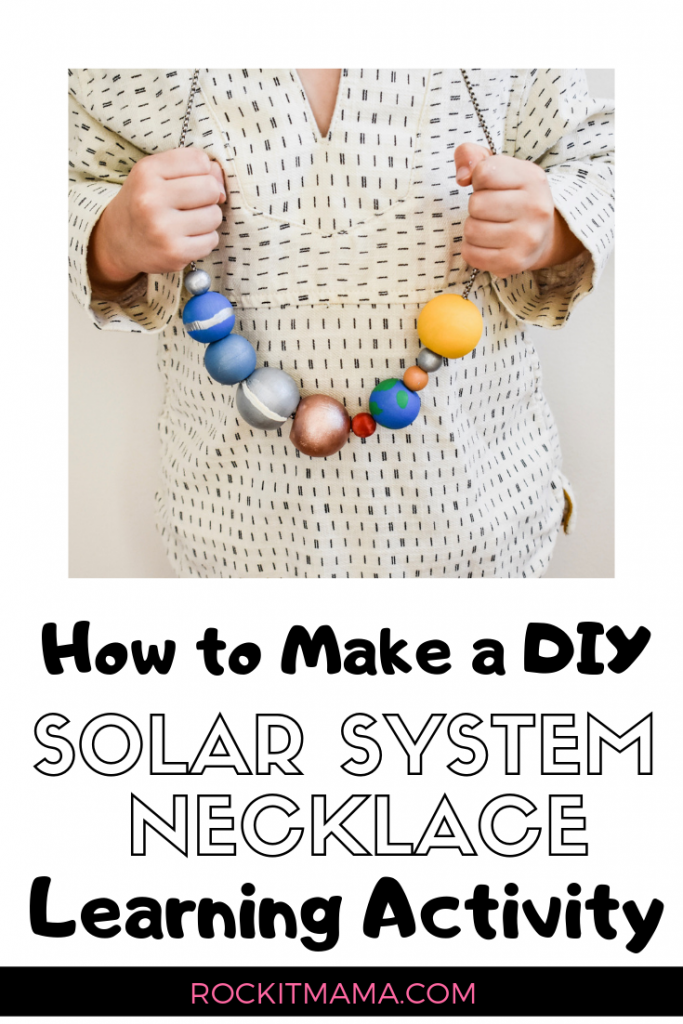
9. Wear a solar system
Have students paint different-size wooden beads to look like the various planets. Once the paint is dry, seal them with a clear coat. Then have students string them onto a chain or string.
Get tutorial: Solar System Necklace
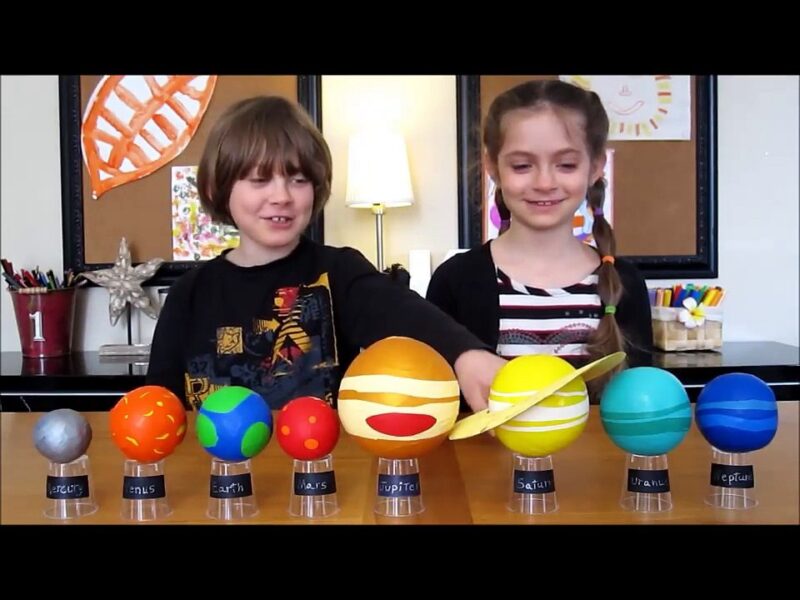
10. Use balloons and rice to build planets
Watch these adorable twins explain how to build models of the planets using rice and balloons. Once the models are complete, display them on plastic cups that are labeled with each planet’s name.
Get tutorial: Balloon Planets
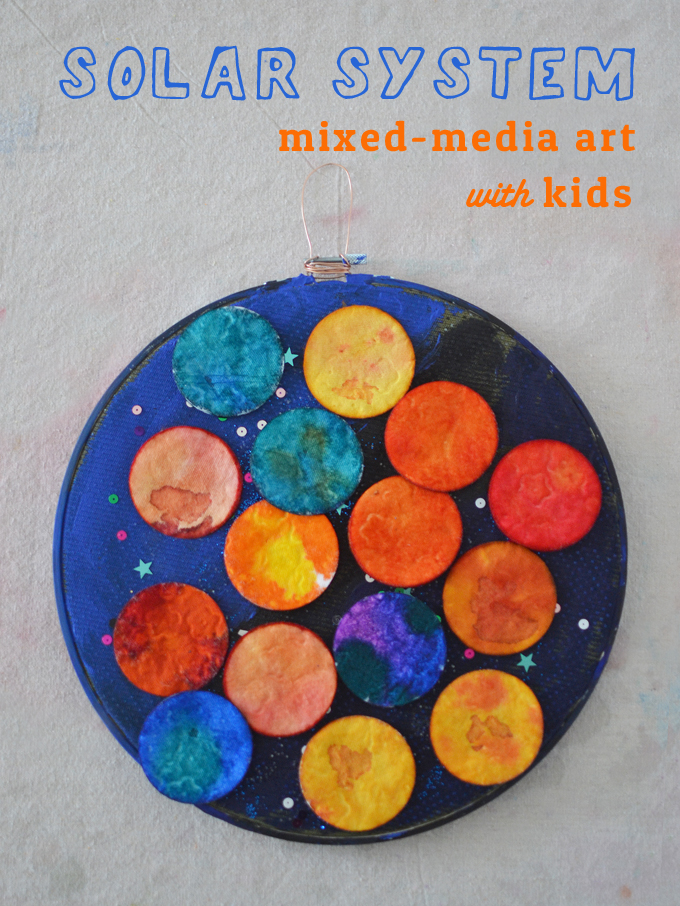
11. Create a solar system using mixed-media art
You will need several days to complete this project, but the end result is just so cool! First, use a pipette and liquid watercolors to paint cotton rounds to resemble the planets. Then, use dark fabric to fill an embroidery hoop. Supply your students with acrylic paints so they can paint the fabric. Students should be encouraged to add sequins or glitter to the wet paint since they will make for a more realistic-looking night sky. Finally, have them glue their planets wherever they want.
Get tutorial: Mixed-Media Solar System
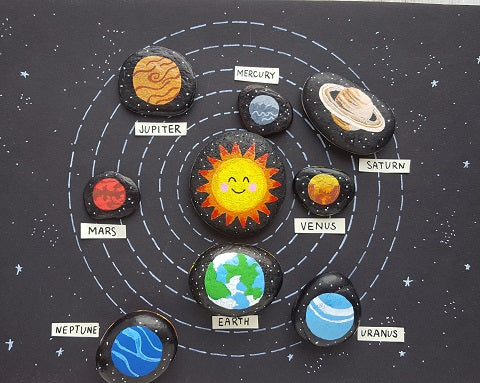
12. Paint rocks to resemble planets
Since rock painting is always fun, why not try painting rocks to resemble the planets and the sun? Once done, you can lay them out on a piece of black card stock. Be sure to use fine-tip permanent paint pens so you can really capture the details, and even leave them outside for friends to find.
Get tutorial: Rock Planets
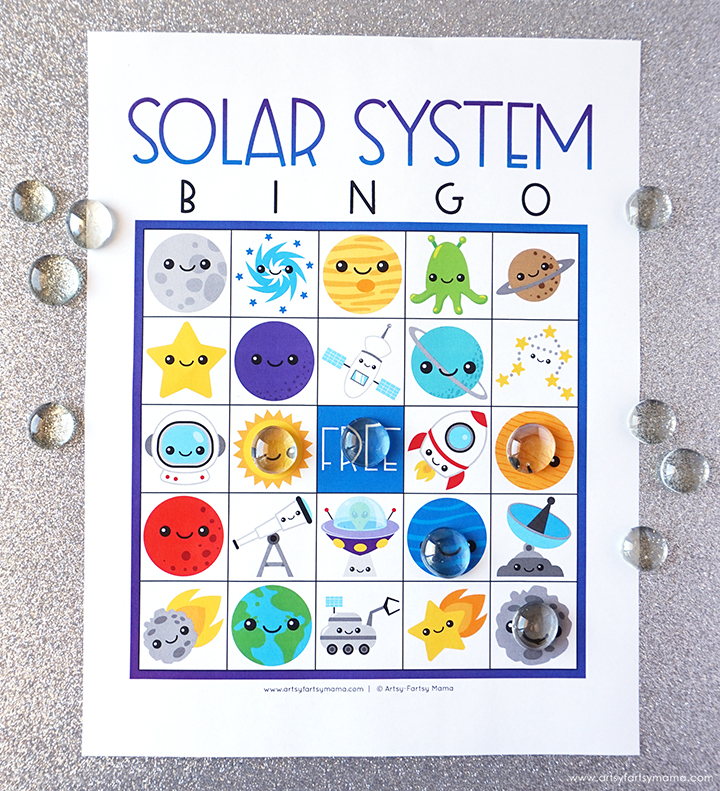
13. Play solar system bingo
Print the free bingo cards, then gather some glass gems or buttons to use to cover the spaces. This game would make for the perfect reward for good behavior since it is so fun!
Get printable: Solar System Bingo
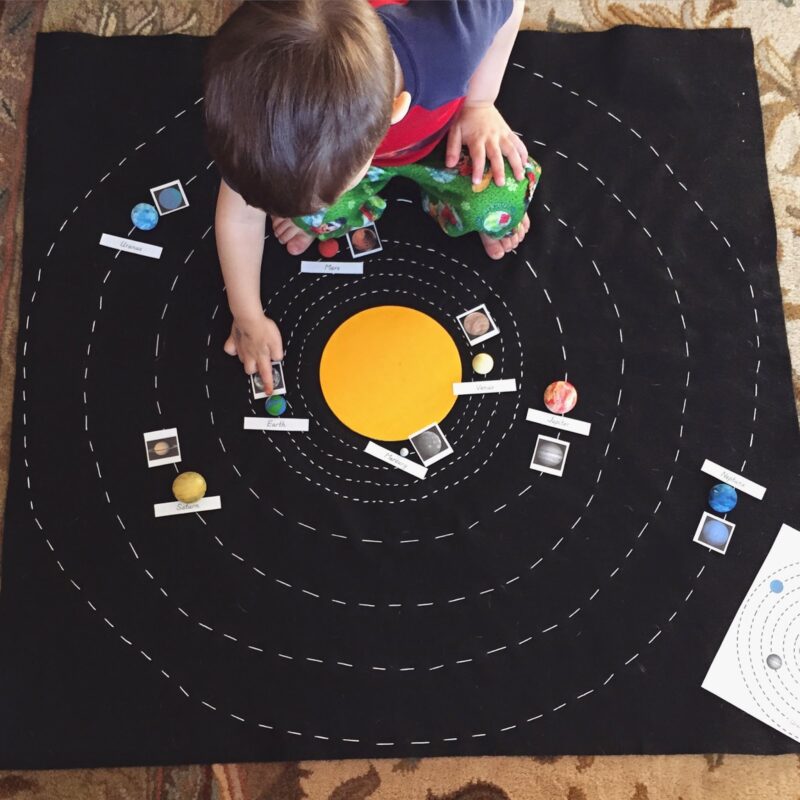
14. Map out the solar system on the floor
Some solar system projects require considerable preparation but are totally worth it. We especially love that this one is interactive.
Get tutorial: Solar System Map
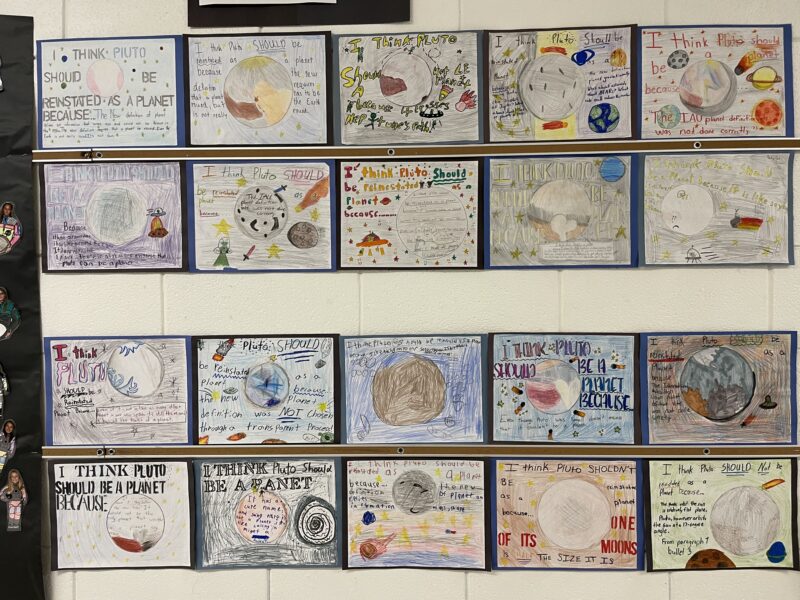
15. To Pluto or not to Pluto
Begin by having students read two articles: one about why Pluto should be reinstated as a planet and one about why it should not. Then have them pick the best fact from each article and make their own personal decision on the issue. Once they make their decision, they’ll create a poster stating their opinion and the reason for it. Finally, have them create an astronaut of themselves to show how they voted.
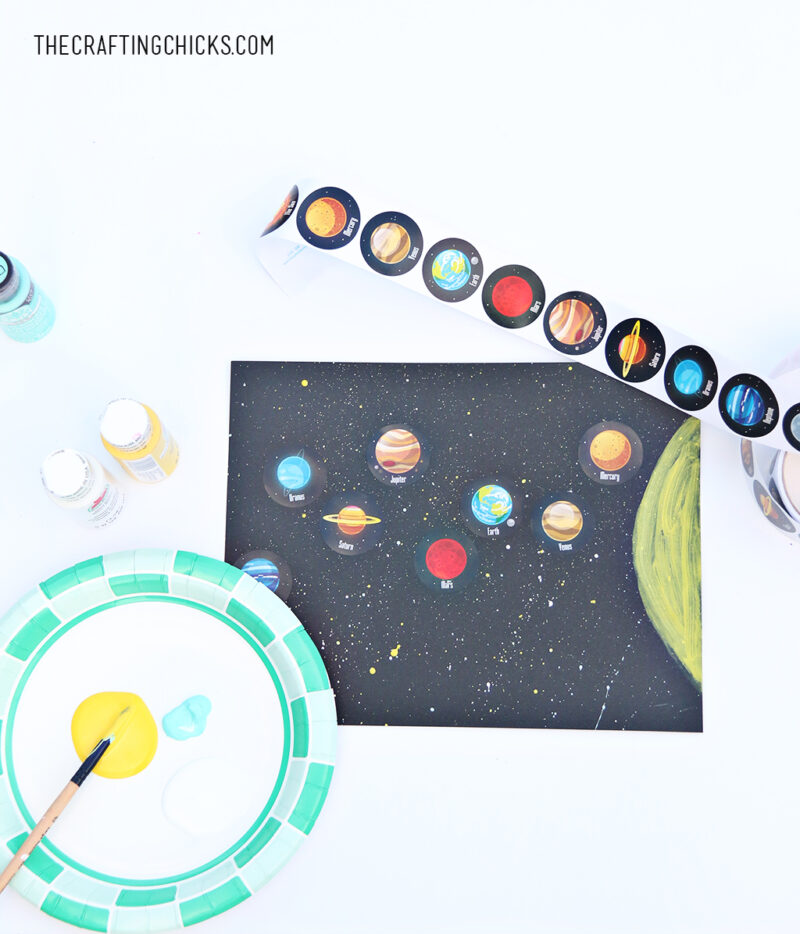
16. Use stickers to create a space scene
Use a splatter technique to create the backdrop for your solar system scene. Purchase planet stickers like these in bulk so kids can easily build their solar systems.
Get tutorial: Solar System Sticker Craft
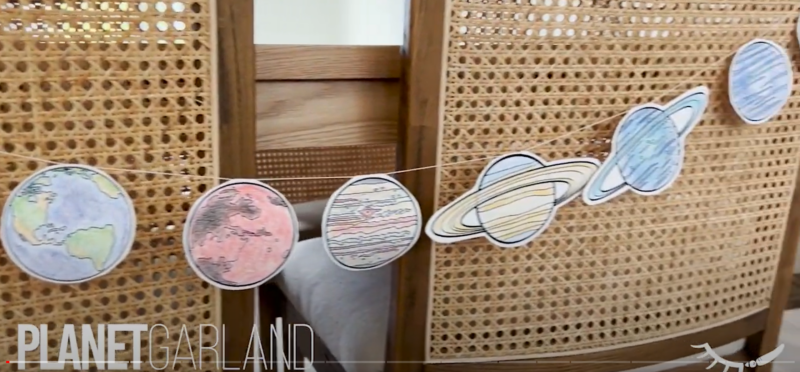
17. Craft a solar system garland
While not a free printable, we think this affordable solar system coloring page is perfect for creating a garland you can display around your classroom or home. Have plenty of colored pencils and markers on hand so students can engage in some stress-reducing coloring!
Watch video: Planet Garland
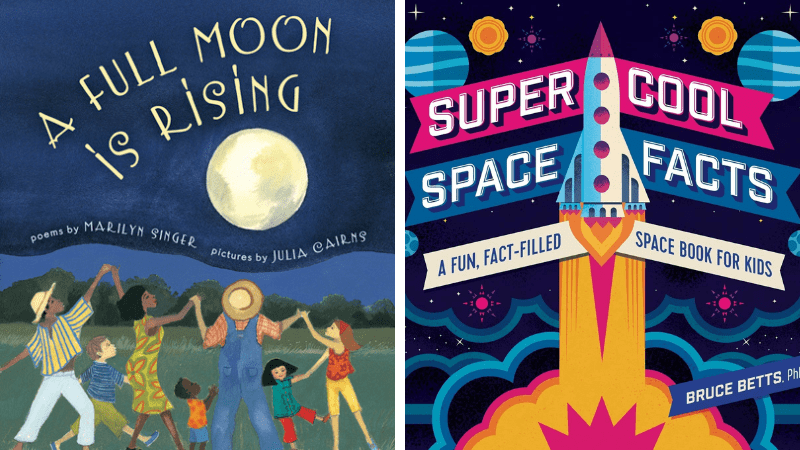
18. Read books on the solar system
There really is no substitute for a good book when teaching students about a topic like the solar system. Stock up on some popular titles, then display them in your classroom library so students can read up on the planets and stars.
Learn more: Our Favorite Books About Space
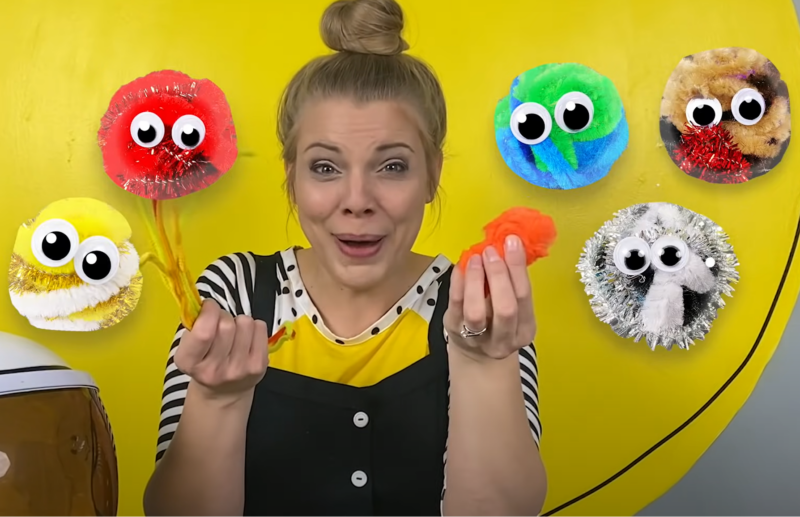
19. Make pipe cleaner planets
If you’re a pre-k or elementary school teacher, odds are you already have a drawer or box full of a variety of pipe cleaners. Put them to good use by having your students make these adorable pipe cleaner planets.
Watch video: Pipe Cleaner Planets
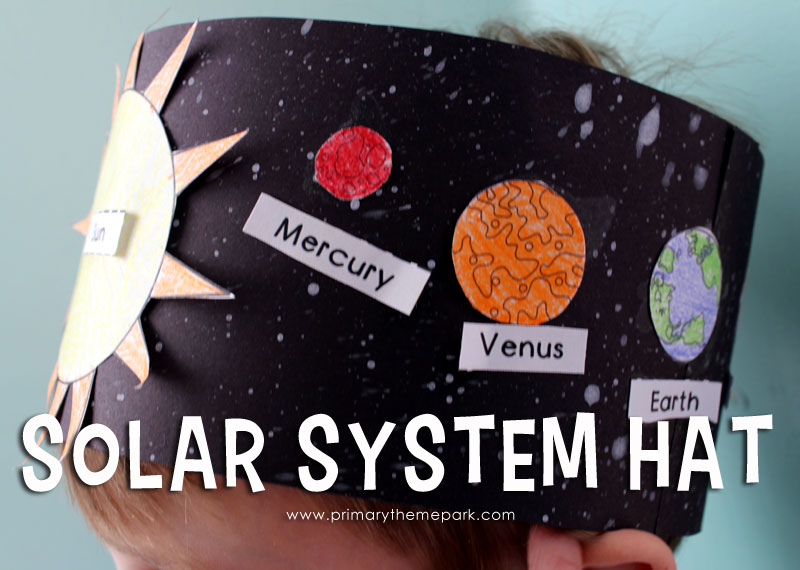
20. Create and wear a solar system hat
It’s probably best to pre-cut the black strips before doing this project with your students. Once the strips have been cut, have your students splatter paint on them. While the bands are drying, have your students cut and color the planets using a free printable. Then glue the sun, planets, and labels onto the hat.
Get tutorial: Solar System Hat
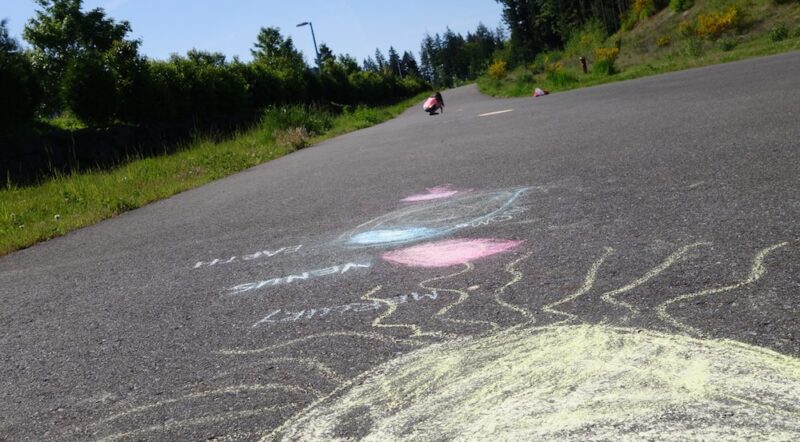
21. Map out the solar system outside
This project incorporates math as well science since you will need to measure the planets for an accurate comparison. All you need is chalk and some space for this easy project.
Get tutorial: Chalk Solar System
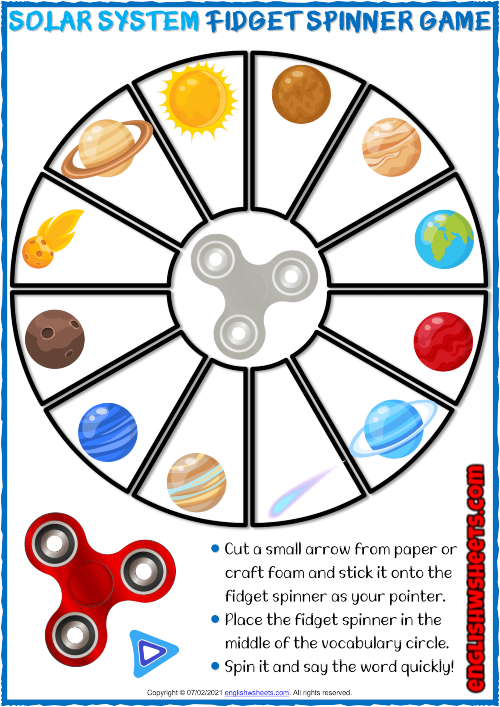
22. Play with a solar system spinner
Print this free game board, then place the fidget spinner in the middle. Have your students play and see how quickly they can recognize the various features of the solar system.
Get printable: Solar System Spinner

23. Make a Styrofoam planet model
You can’t have a list of solar system projects without the good old-fashioned Styrofoam ball model. Grab some Styrofoam, paint, and skewers and get to work!
Get tutorial: Styrofoam Planet Model
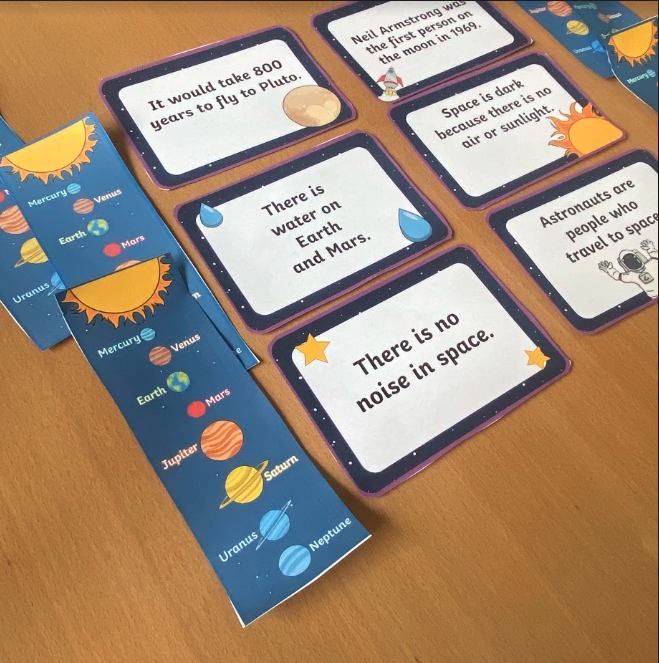
24. Make solar system bookmarks and fact cards
Print out solar system fact cards to have kids quiz each other or as writing prompts for research projects. The bookmarks are a great way to reinforce what they learned while reading.
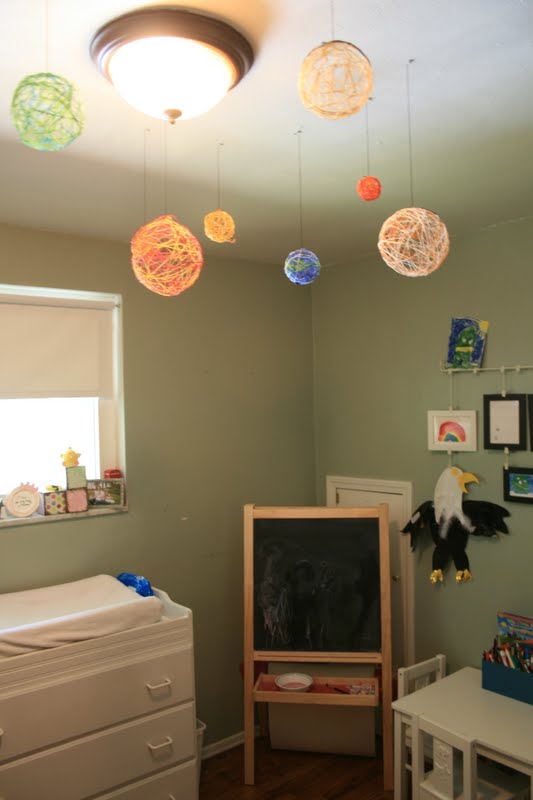
25. Fashion planets from yarn and papier-mâché
This project is going to take a lot of time and you will need a few days to complete it, but these yarn planets will be totally worth it. You can even get some command strips and string and hang them from your classroom’s ceiling once done.
Get tutorial: Papier-Mâché Planets
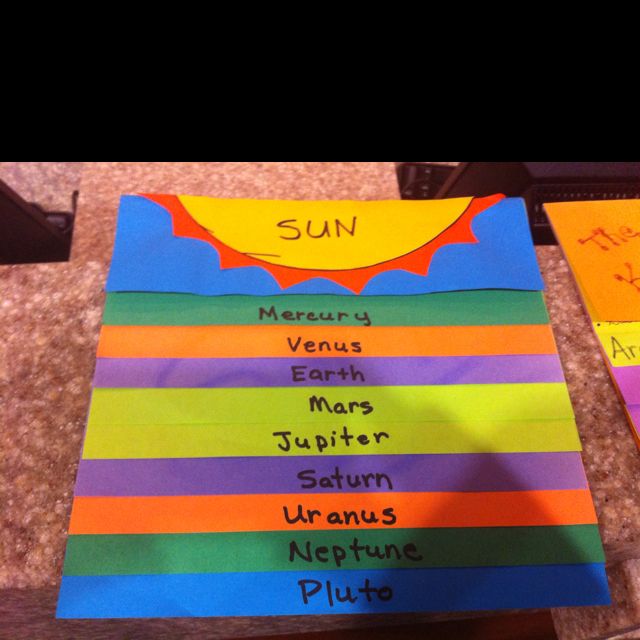
26. Line up the planets
This simple project demonstrates to students how far each individual planet is from the sun. All you will need is construction paper, glue, and markers.
Learn more: Planet Lineup
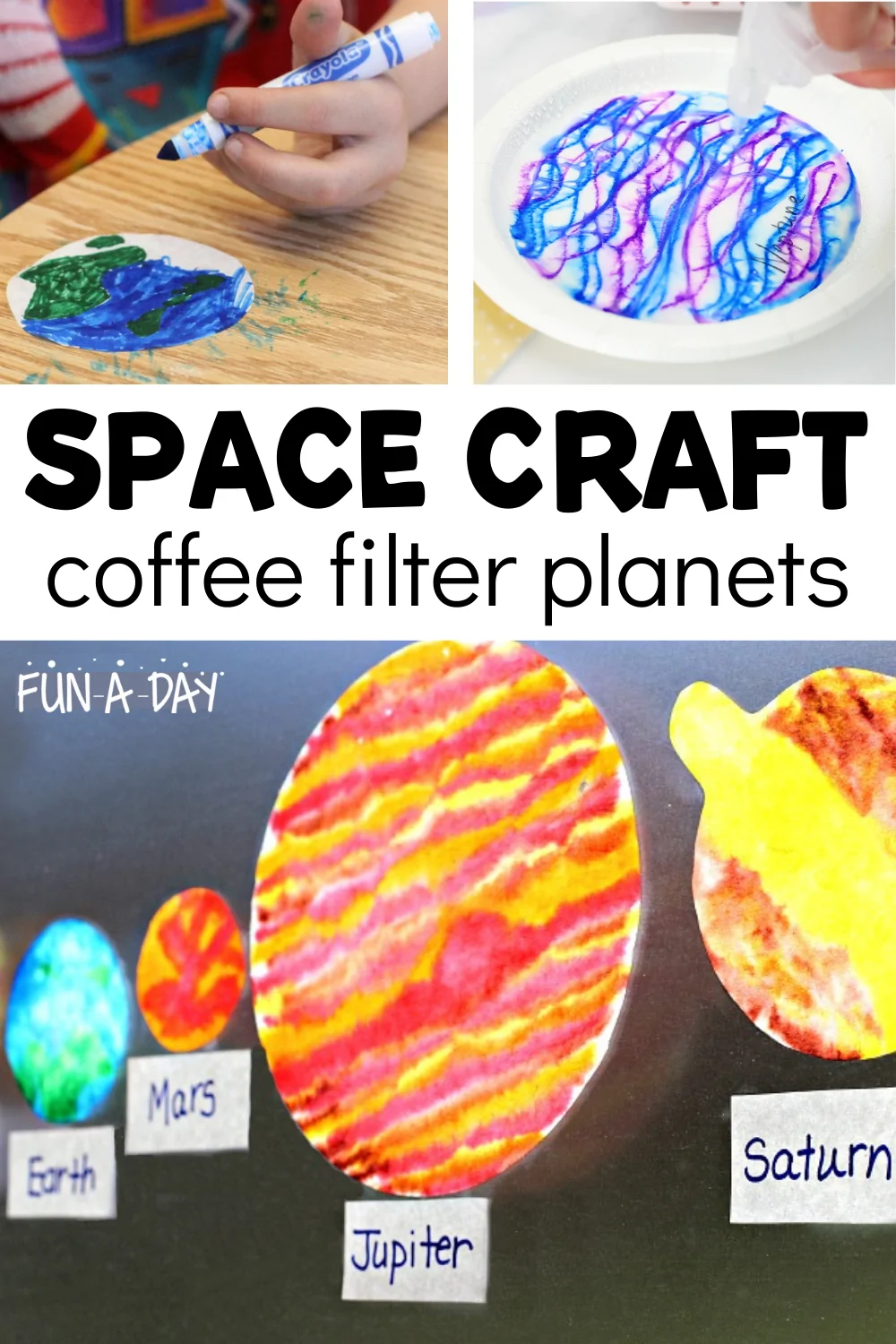
27. Make planets from coffee filters
Place paper plates under a coffee filter to contain any mess, then have students color the filters with markers. Once colored, spray water over them to get the final watercolor-like effect. Finally, cut them to size and display them around your room.
Get tutorial: Coffee Filter Planets
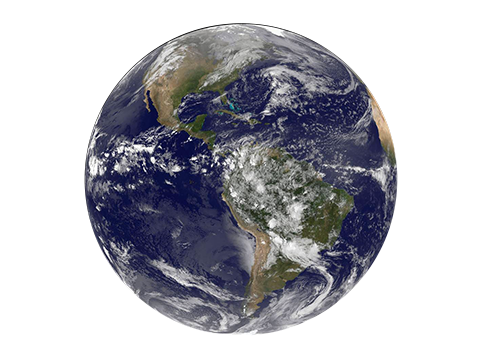
28. Explore NASA’s website
NASA has an excellent website that includes so, so many resources to explore all about space and the solar system.
Learn more: NASA Solar System Exploration
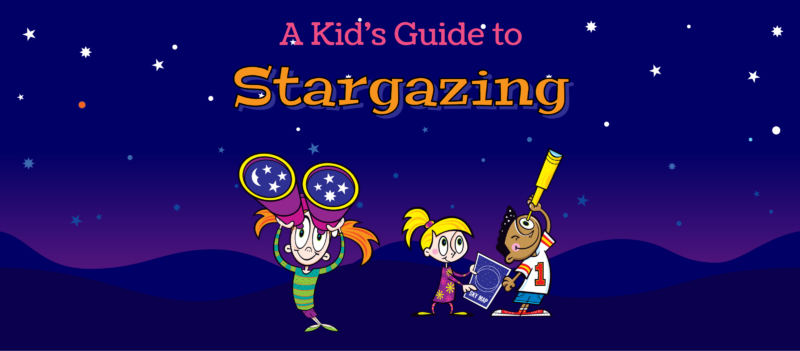
29. Do some stargazing
This is a project that can either be done at home or during an evening outing. The Museum of Natural History’s website has an entire section full of tips for kids on stargazing.
Learn more: Astronomy Guide
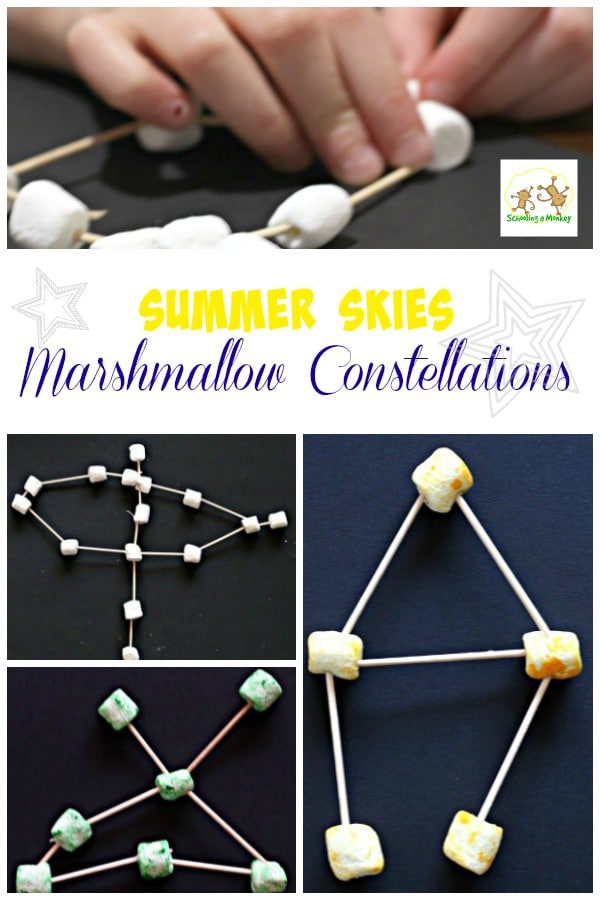
30. Make marshmallow constellations
Get some books and other resources on constellations, then challenge your students to create constellations with marshmallows and toothpicks. (Be sure to have plenty of extra marshmallows since you know little stargazers love to snack!)
Get tutorial: Marshmallow Constellations
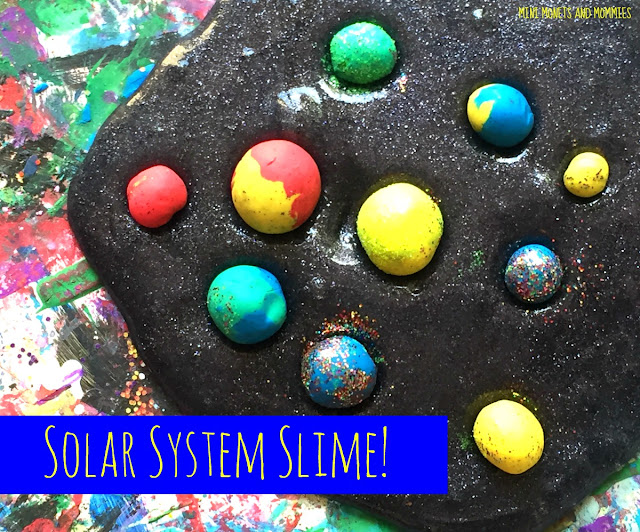
31. Make some solar system slime
Kids love slime, but be prepared for a day filled with mess! Solar system slime and clay planets are a fun (and messy) way to explore space.
Get tutorial: Solar System Slime
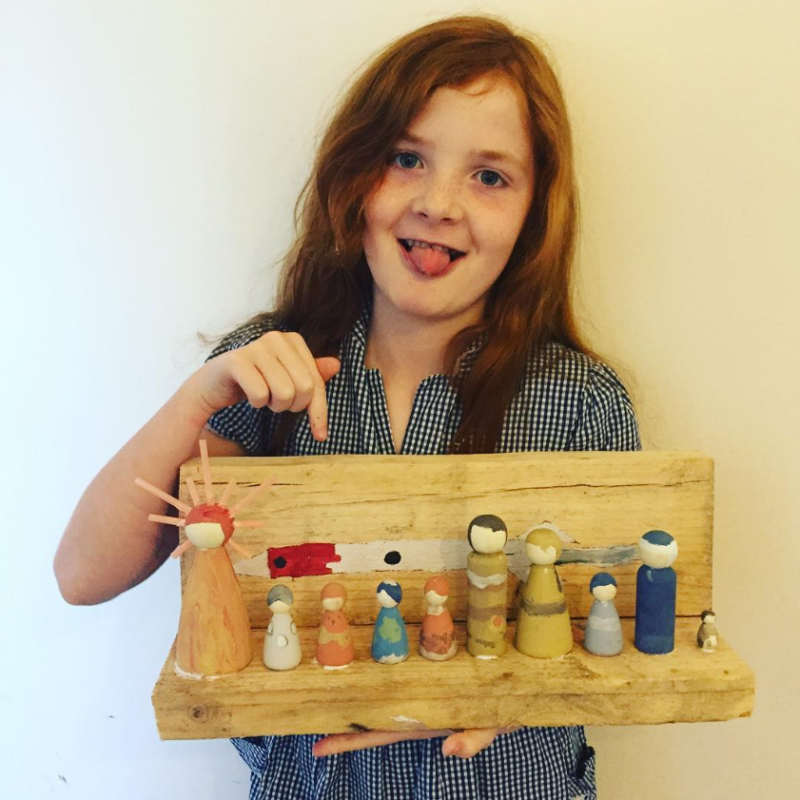
32. Turn planets into peg dolls
This is one of the more unique solar system projects we’ve seen. Grab yourself some peg dolls at your local craft store or Amazon in varying sizes and shapes. Then give kids some paint and let them design them to look like the sun and planets.
Learn more: Lovely Lottys Homework
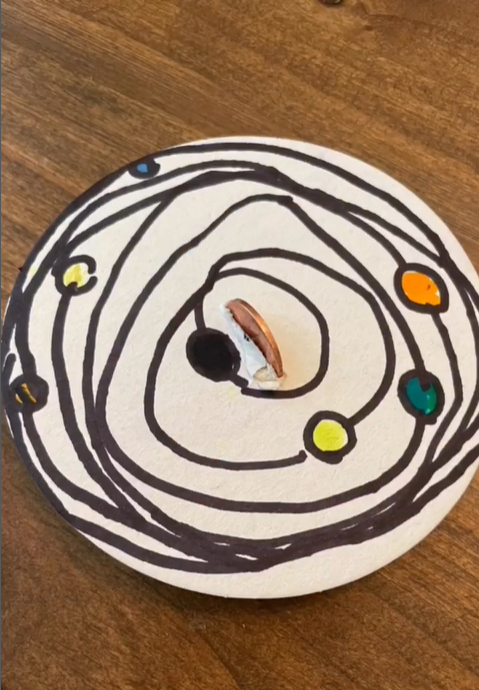
33. Spin the planets on a penny
This is another planet spinner, but this time using a penny instead of a fidget spinner. Show the kids a diagram of the solar system, have them draw it on a white coaster-sized circle, and then cut a slit in the middle. Make sure the adult cuts the hole. Then place a penny in the middle to stand in as the sun. Once they’re made, kids will have a blast seeing how fast they can spin their solar system.
Learn more: Solar System Penny Spinners
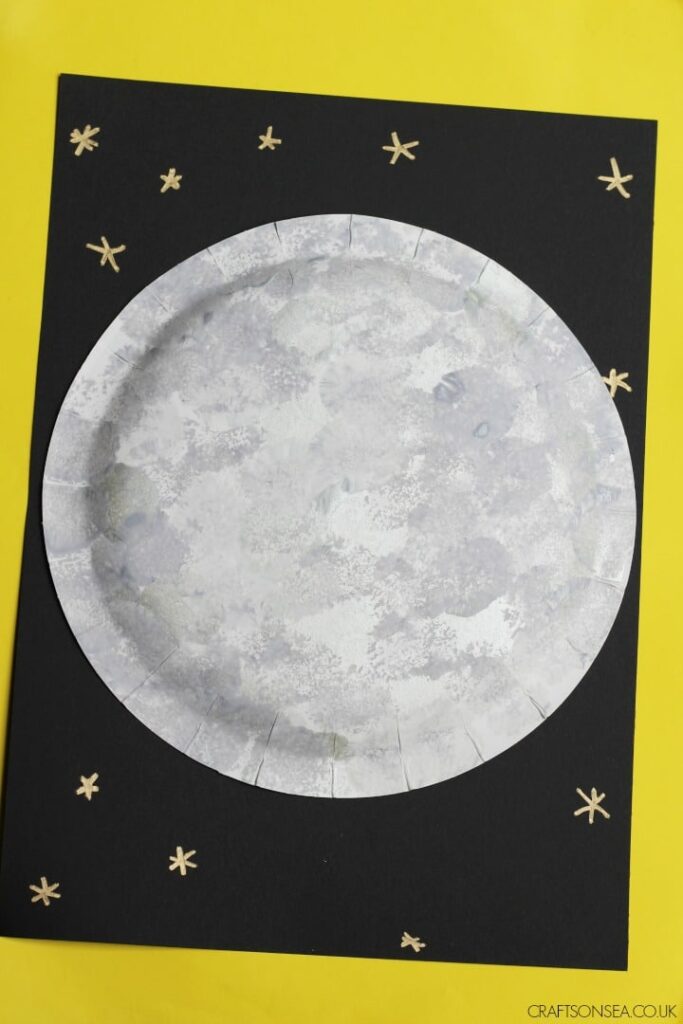
34. Print a moon with pom-poms
This is the perfect solar system project for toddlers or preschoolers. Simply turn a paper plate upside down, put some gray paint on a palette, and then let kids dab pom-poms in the paint and apply them to the plate. You can talk to the kids about the surface of the moon and craters while they craft.
Get tutorial: Pom-Pom Printed Moon Craft
35. Take a tour of the ISS
Ever wonder what it’s like to spend time in the International Space Station? Wonder no more because you can take a tour with this informative video!
36. Create a solar system bracelet
While we already had a solar system necklace on our list, this bracelet was too pretty not to include. Plus we think it would make a great gift idea too!
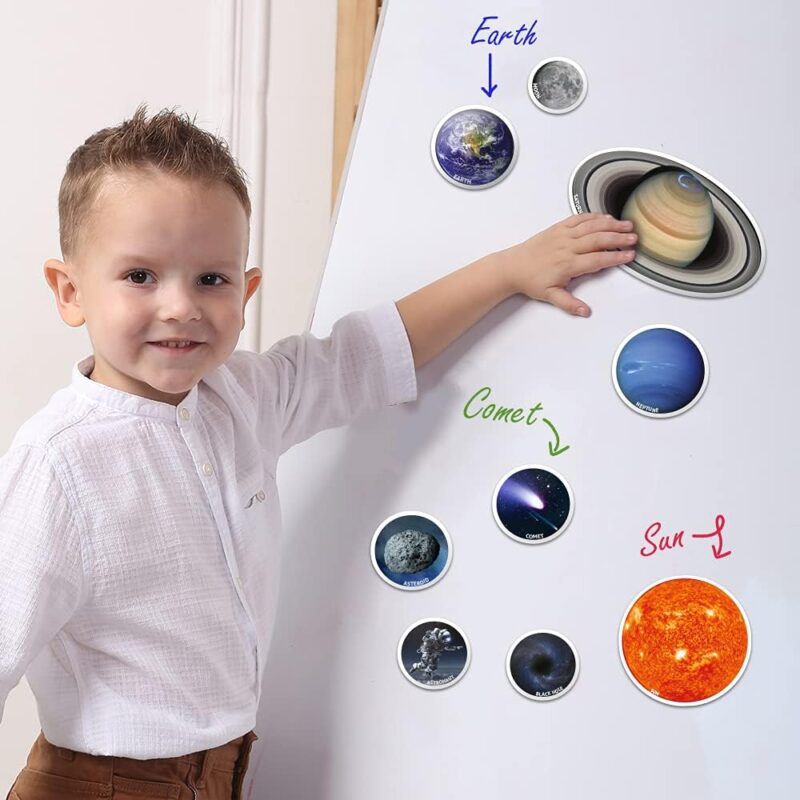
37. Use magnets to make a solar system
Solar system magnets plus a white board are a great way to let kids explore the planets, sun, and other aspects of the solar system. It’s also an easy, store-bought solution if you are short on time.
Buy it: Magdum Solar System Magnets
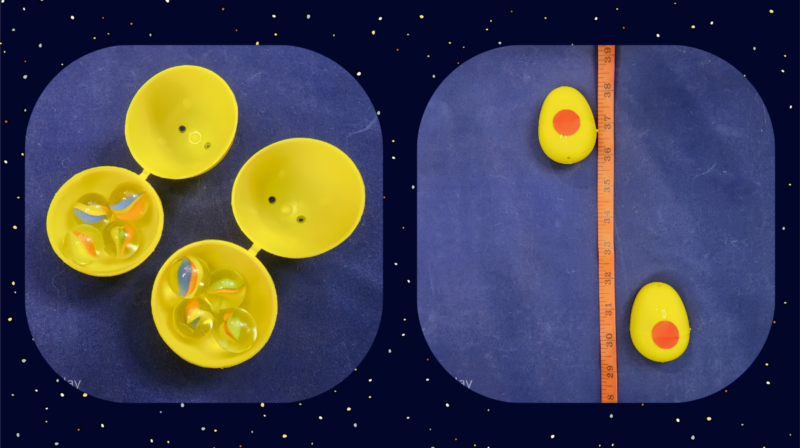
38. Run a gravity experiment
This is a really cool experiment that will teach kids about gravity and centripetal force in a hands-on way. The experiment involves dropping plastic eggs filled with marbles from varying heights and then recording the speed with which they fall to the ground.
Get tutorial: Gravity And Centripetal Force in Our Solar System
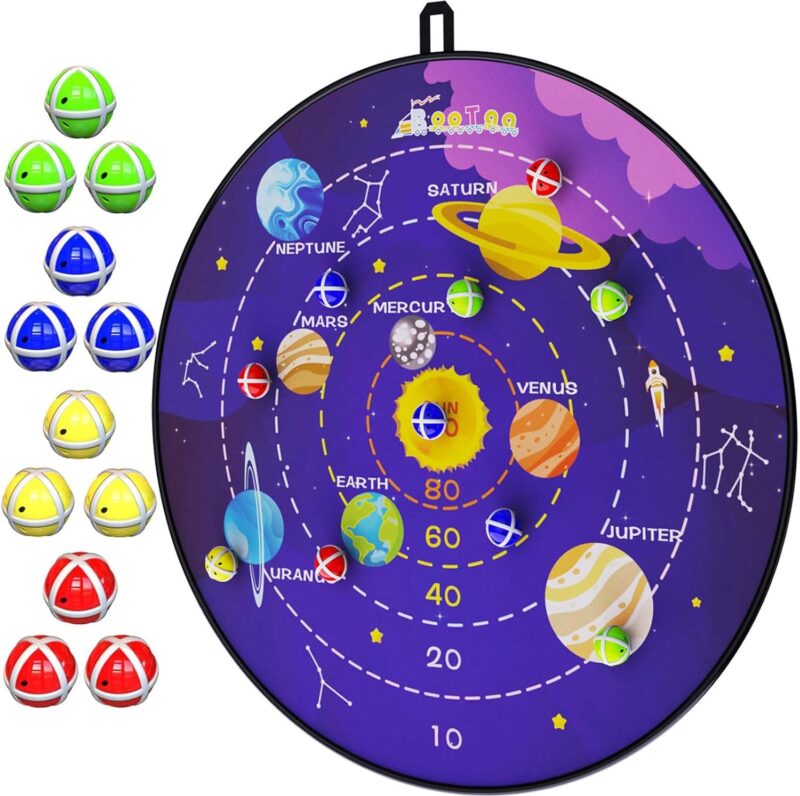
39. Test your aim
Kids learn best when having fun, so why not add this solar system dartboard to your indoor recess repertoire?
Buy it: BooTaa Large Dart Board for Kids
40. Take a field trip to a football field
Show your students this video so they really understand the size and scope of the solar system. If you’re feeling adventurous, you could take them out to the football field to have them reenact the video to really drive the point home.
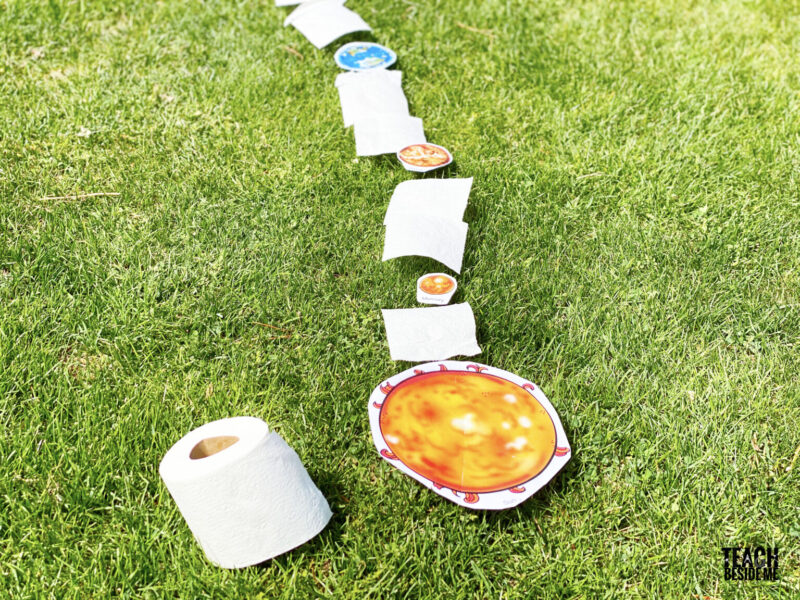
41. Roll out some toilet paper
Use a roll of toilet paper and some printable planets to demonstrate the scale of the solar system and how far apart the planets are from one another and the sun. This is a great activity to do outside on a nice day.
Learn more: Space Unit for Kids
Can’t get enough space? Check out these Out of This World Space-Themed Classroom Ideas.
